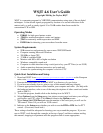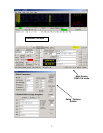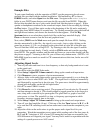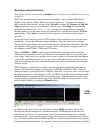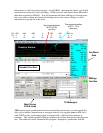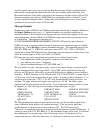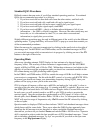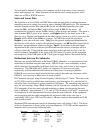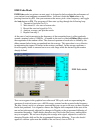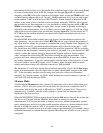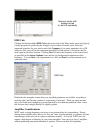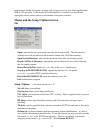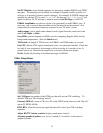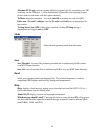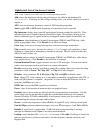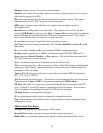Standard QSO Procedures
Difficult contacts become easier if you follow standard operating practices. For minimal
QSOs, the recommended procedure is as follows:
1. If you have received less than both calls from the other station, send both calls.
2. If you have received both calls, send both calls and a signal report.
3. If you have received both calls and a report, send R plus your signal report.
4. If you have received R plus signal report, send RRR.
5. If you have received RRR — that is, a definite acknowledgment of all of your
information — the QSO is officially complete. However, the other station may not
know this, so it is conventional to send 73s (or some other conversational
information) to signify that you are done.
Slightly different procedures may be used in different parts of the world, or in the different
operating modes. Typing the F5 key will cause WSJT to pop up a screen that reminds you
of the recommended procedures.
Select the message for your next transmission by clicking in the small circle to the right of
the message text. In the FSK441 and JT6M modes, and for shorthand messages in JT65,
you can switch messages while a transmission is in progress by clicking on one of the TX
buttons to the right of the circles.
Operating Hints
After every decoding attempt, WSJT displays its best estimate of a detected signal’s
frequency offset. The accuracy of these estimates is approximately ±25 Hz for FSK441
signals, ±10 Hz for JT6M, and ±3 Hz for JT65. Within these tolerances (and subject to the
stability of oscillators and the propagation path) you should see consistent numbers in the
DF column during any QSO producing usable signals.
In the FSK441 and JT6M modes, if DF lies outside the range ±100 Hz it will help to retune
your receiver to compensate. Do this with the RIT control, or by using split RX/TX VFOs.
In general you should not change your transmitting frequency during a QSO, since your
partner will be trying to tune you in at the same time.
JT65 is tolerant of frequency offsets up to ±600 Hz, and unless the “red spike” is close to
one edge of the plot area (see picture on p. 5), retuning with RIT is optional. However, note
that EME QSOs on bands above 432 MHz can have Doppler shifts of several kHz or more.
In such cases you will certainly need to use RIT or split VFOs in order to acquire the
received signal. Once the program has synchronized on a JT65 signal, it’s best to click on
the red spike, check Freeze, and reduce Tol to 100 Hz or less. In subsequent decodings,
WSJT will search a range of frequencies only ±Tol Hz around the DF selected by clicking
on the red spike.
Question marks in displayed JT65 text lines indicate “OOO” and shorthand messages about
which there could be some doubt. These occur when the OOO flag has apparently been
found but the full message text not decoded, or when a probable shorthand message is
detected but you have not yet checked Freeze and reduced Tol to 100 Hz or less. Operator
skill is required in order to make the best possible use of JT65 shorthand messages. Visual
aids to decoding shorthand messages “by eye” are provided if you click on the sync-tone
frequency in the Big Spectrum display.
7



